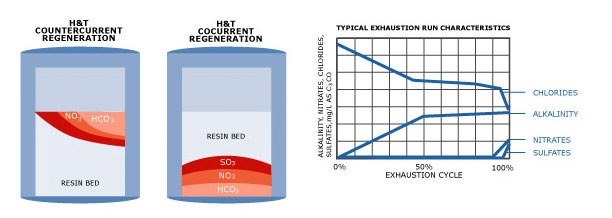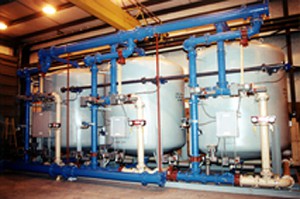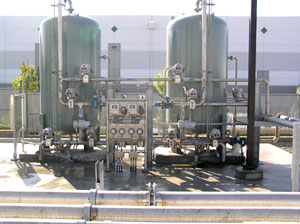H&T has extensive experience in the field of removing nitrate from drinking water. We have built anion exchangers as part of demineralizer systems to treat boiler feed water in power plants since the 1950s. Having installed many large demineralizers for some of the largest electric utilities in the country, H&T has a long, established background in ion exchange. Our vast experience has enabled us to develop a thorough and efficient process that conserves the amount of salt used and minimizes the amount of waste produced by a treatment system. Nitrates are removed by ion exchange using an anion resin operating in the chloride cycle. Brine is used for regeneration and chlorides are exchanged for nitrates and sulfates. However, the optimal design of a nitrate exchanger depends heavily on the analysis of the water to be treated. The ration of nitrates to sulfates will impact resin capacity and needs to be taken into account. If sulfates are high enough, a nitrate selective resin may offer the best performance. Total hardness will also have an effect on design. If hardness in the water is too high, softener is needed for regenerated water. This prevents precipitation in the bed during the regeneration process. H&T offers conventional downflow regenerated systems, low-waste, high-efficient systems using upflow regeneration with air block bed for compaction, and upflow regenerated packed bed systems.




